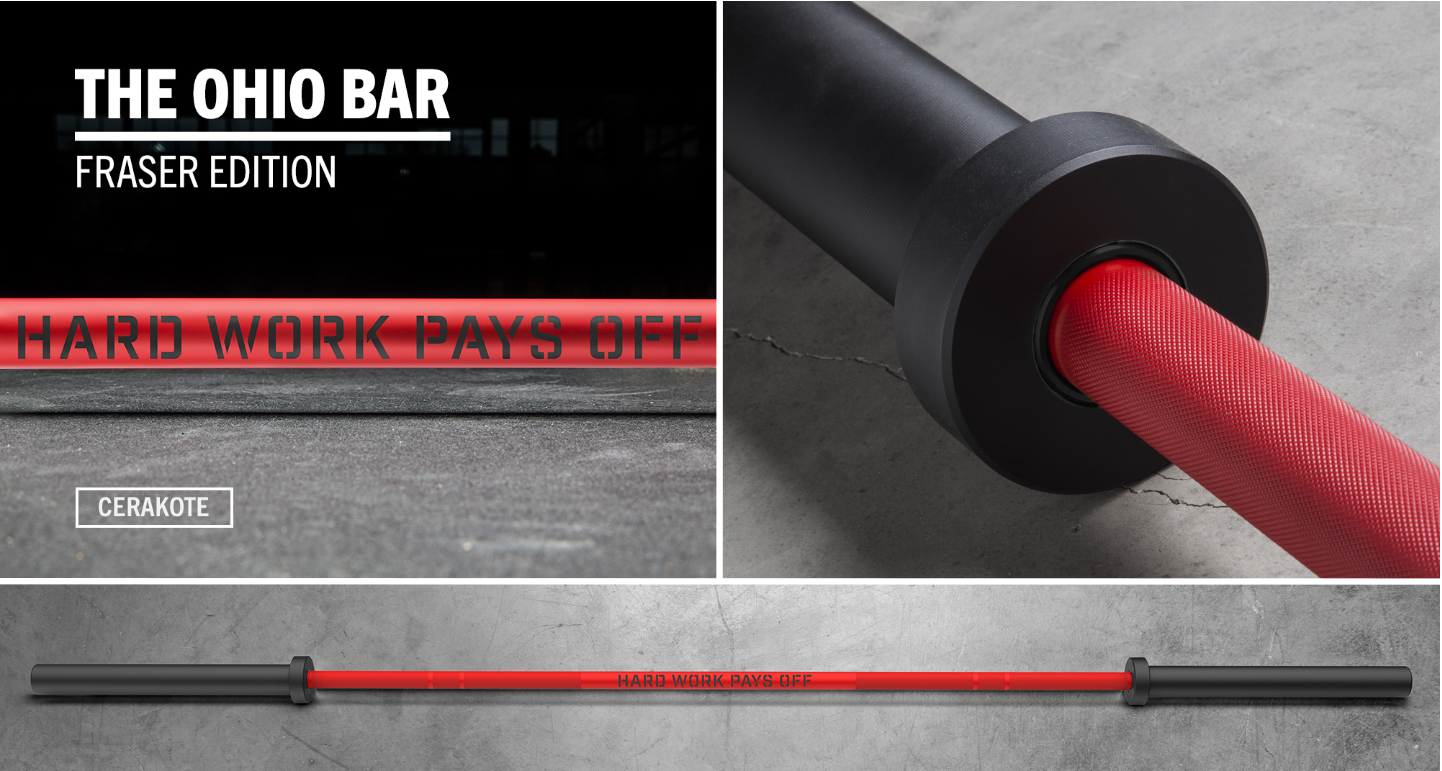Barbell with resistance bands
This is a short overview of what to consider on a barbell purchase. For more details follow the link to one of the articles on the specific barbells.
Related articles
Barbell with springs
Spring collars are the most common way you will find to secure the plates on the barbell. They are cheap and cheerful and easy to use. While they are cheap and robust they have one major disadvantage. Springs have the tendency to scratch the bar and therefore eat away at the finish. This makes the barbell less durable and looks bad quicker. We are still talking mine about a process that takes years in-home use and maybe a month in a gym depending on how often it is used. Especially avoid spring collars when you get a barbell with Cerakote coating. Good clips you can get via this link:
Barbell with clips
Clips are one step up from the usual spring collars. They are usually made of plastic or aluminum. Because of the clip mechanic, they are easier to get in and off the bar. This minimizes scratching and maximizes comfort. There are also more design options available than with collars. The only negative about clip collars is that they are more likely to break as they are less robust than spring collars. Some options are:
Barbell with resistance bands
Using barbells with resistance bands has been made popular through the Westside method. Louie Simmons is a proponent of constant variation and an emphasize on speed in strength training. Attaching resistance bands to a barbell is a way of accomplishing this.
While the resistance bands are easy to get watch out that your rack or platform is set up to work with bands. This is usually done by putting band pegs on the lower beams or the provided band holders. If you use resistance bands with a rack and barbell make absolutely sure it is bolted to the ground. Otherwise, it is very likely it will topple over.
Barbell with chains
Training with chains is the same idea as training with bands. You want to alter the strength curve by having more or less resistance in certain parts of the movement based on the setup. To train on a barbell with chains the setup can be awkward. Here are some tools which will help.
Barbell for home
If you want to buy a barbell for your home you can either opt for the Atlas bar from TITAN or the Rogue Ohio bar from Rogue Fitness for most applications. If you want something smaller as you need to be space-efficient the CB60 is an alternative, but not a full-size barbell.
Barbell for women
Barbells for women have different measurements to the ones for males. They usually come in at 15kg and a bit shorter and with smaller sleeves. The exception is powerlifting where everyone uses the same barbell specs. Some examples are
Barbell for squats
A standard barbell will do for squats. If you want to take it up a notch you can use the squat bar from rogue which has 32mm diameter.
Barbell for beginners
Good barbells for beginners are the technique bars which are lighter than the standard barbells. This way you still ingrain the correct movement patterns as the dimensions are the same while putting less of a strain on the execution.
Barbell for deadlift
Deadlift barbells usually have the whip of an Olympic barbell but without the bearing for the sleeves. This means that the bar is more likely to bend which makes the lift easier while you stay price efficient as the barbell does not need a lot of spins if you don't clean or snatch it. Examples are:
Barbell with bearing
Barbells with bearing are a great option for Olympic weightlifting. They are usually available with different tensile strengths and knurling depending on your training goals. Examples are:


